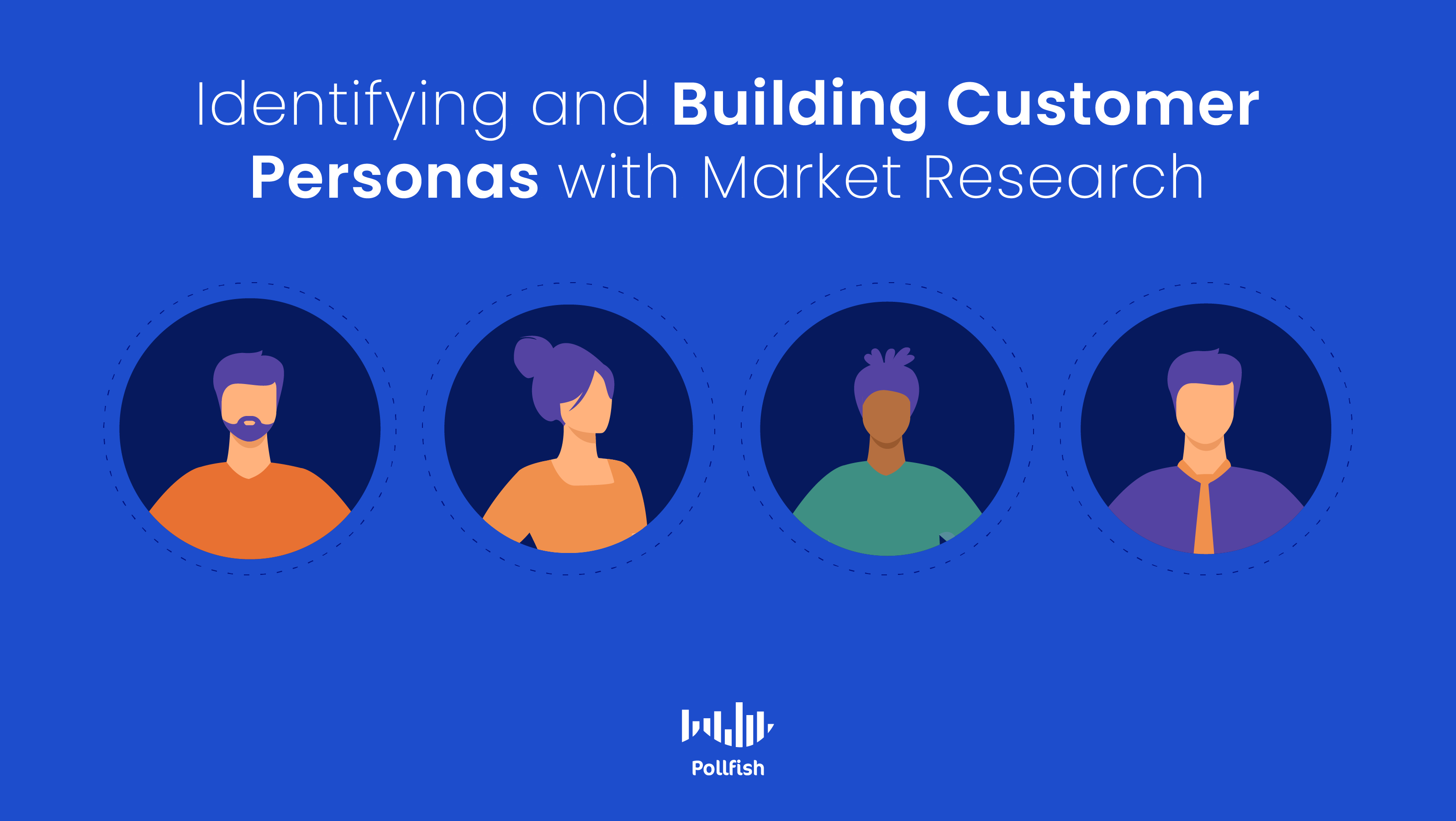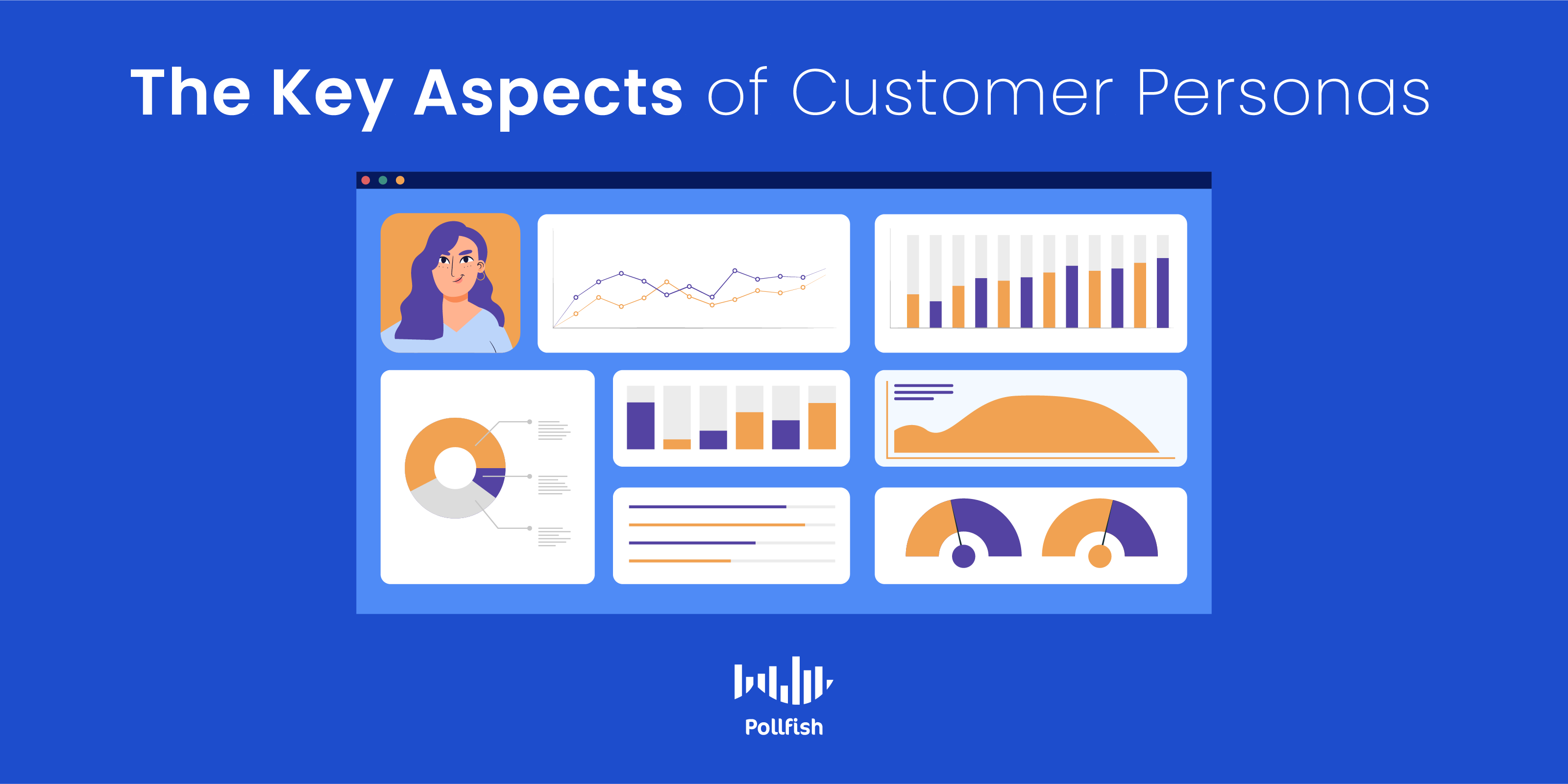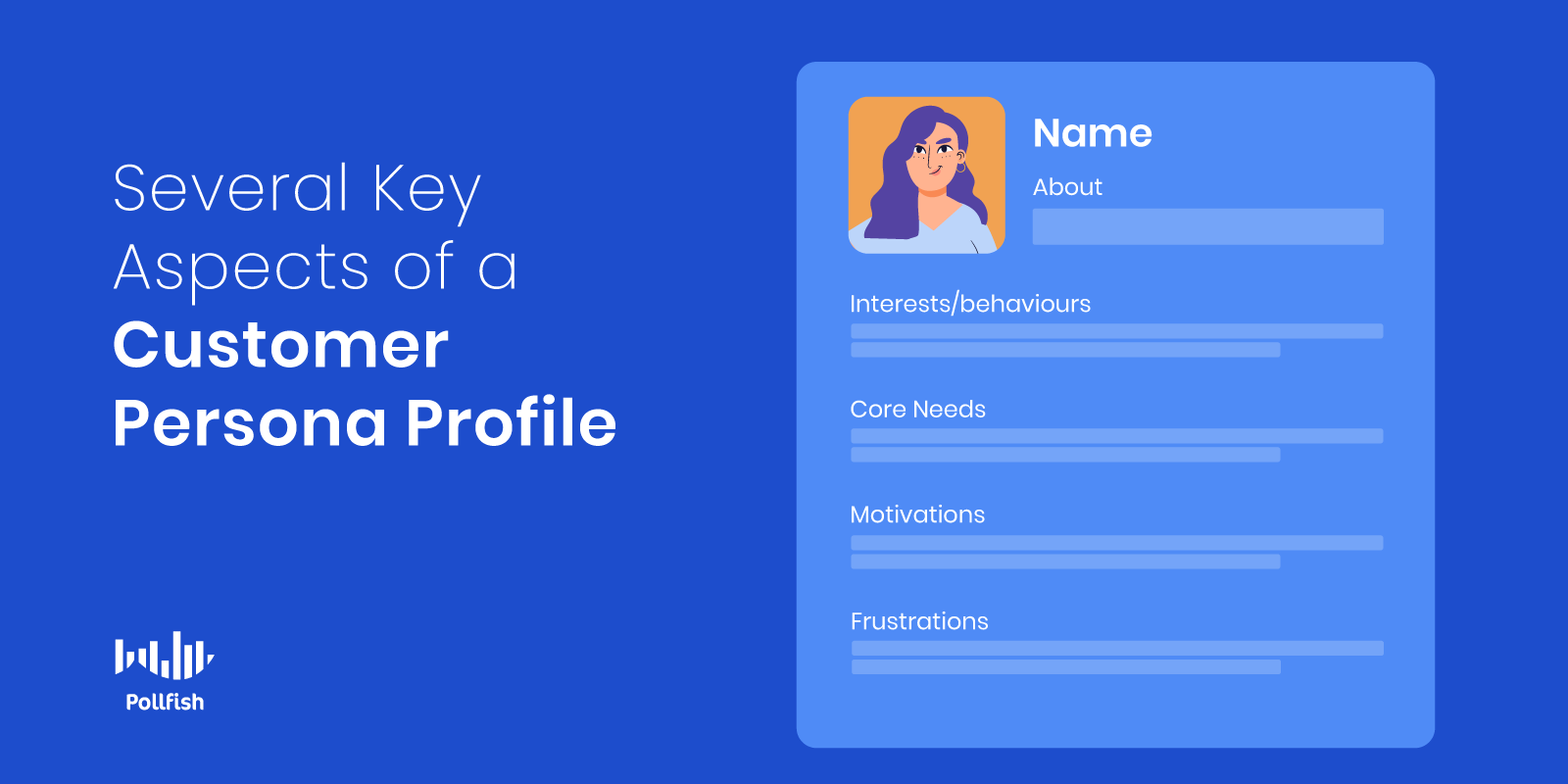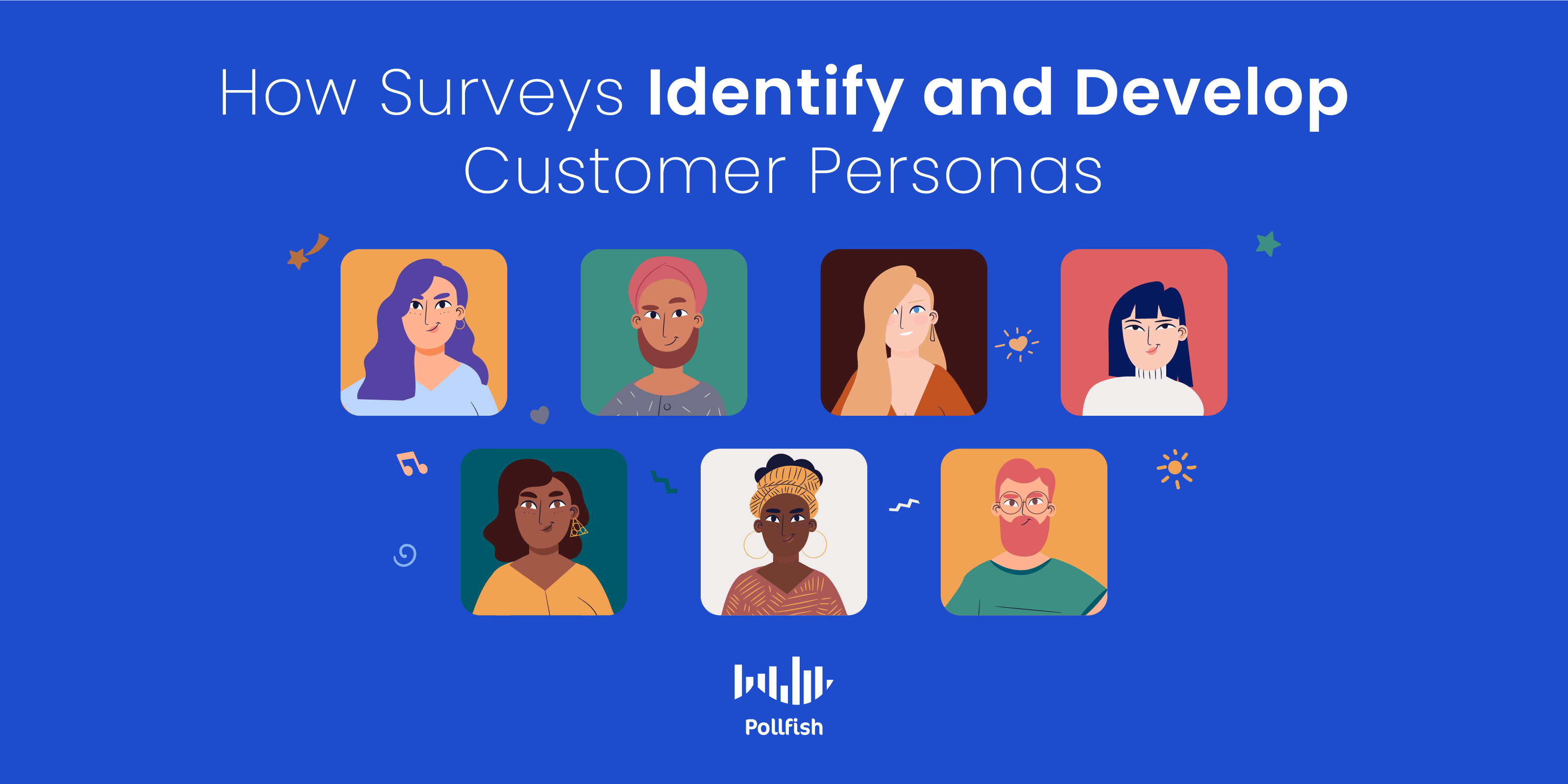How to Identify and Build Customer Personas with Market Research

It is critical for businesses to be able to identify and cater to their customer personas, as these entities are not the same across businesses, regardless if the businesses share the same industry or niche.
Customer personas place a business’s customers into specific, collective archetypes, the kinds that help avoid targeting the wrong people in marketing campaigns. But customer personas can help b businesses achieve much more than identifying and targeting the correct consumers.
As a matter of fact, 93% of businesses that exceed lead and revenue goals segment their target market by customer personas. 56% of companies developed higher quality leads by using personas.
This market research guide explores the notions behind customer personas, their importance and how market research — particularly surveys — help businesses identify and construct their consumer personas.
Understanding Customer Personas
Also called buyer personas, marketing personas and audience personas, customer personas are a form of customer segmentation, but a far more granular subset, as they represent individual people.
A customer persona is a detailed description of a member in a business’s target market, i..e, the group of people most likely to buy from them. This persona is not a real customer, but a fictional character who possesses all the traits of a target market segment.
Building these personas is the more concentrated practice of market segmentation — the process of categorizing a target market into smaller, more defined customer segments. However, customer personas are not the same as customer segments.

Customer segmentation refers to dividing a target market into different sets of customers. These sets inform on a group’s demographics, geographical location and some aspects of their customer buying behavior. Segments help businesses understand the makeup of their target market as different sets of groups.
On the contrary, a customer persona refers to defining individual customers within the segments discovered during customer segmentation. Customers are assigned fictional characters that represent a typical customer in a market segment; they are assigned a granular depiction, one that includes various specifications for each persona.
After establishing a few customer personas, a business can then categorize its leads, prospects and customers into particular customer personas. This is especially useful for businesses with hundreds or thousands of clients and prospects.
The Key Aspects of Customer Personas
A buyer persona is formed as a profile of a customer, therefore including demographic and psychographic traits, along with other detailed characteristics. This includes their values, behaviors, goals and other defined categories.

The following enumerates the key factors of customer personas so that businesses can understand them thoroughly and easily form their own:
- Demographic details
- This includes age, gender, income, marital status, location, race, ethnicity, number of children (if any), etc.
- Customer behavior
- This includes all the actions and behavioral patterns of how customers shop, consume and discard products.
- Pain Points & Objections
- Paint points involve the challenges that customers typically face, how they feel about them and how a business can help them overcome or bypass these challenges.
- Objections include frequent dislikes and concerns in regards to a business, its products, services and experiences.
- Workstyle
- This involves their industry, position, salary, area of responsibility, decision-making authority.
- Lifestyle
- This concerns what customers and leads do in their spare time, what they enjoy doing, their hobbies. whether they own a vehicle, etc.
- Personality
- This is a snapshot that includes determining whether customers are competitive, emotional, logical, outgoing, people-oriented, how quickly they make decisions, etc.
- Goals
- This explains what they hope to do or achieve. Are they more career-focused and want to impress their boss and colleagues? Are they interested in saving money or time?
- It also addresses what would make them purchase from a business in relation to their goals.
- Information Consumption
- This regards how customers prefer to receive and consume information, such as doing internet searches, scrolling on social media, talking with people, reading newspapers, watching various broadcasts, listening to podcasts, reading magazines, etc.
- Designated Marketing Message
- Composed of a few sentences, it outlines how a business helps their customer personas relieve themselves of their pain points and meet their needs.
- Identity
- This includes a name and a stock photo to humanize and visualize the persona, since it is meant to represent a real person.
The Importance of Identifying Customer Personas
Buyer personas are important for businesses on a number of different fronts. All of these bring different kinds of value across departments.
First off, these personas give businesses a comprehensive view of hypothetical customers, one that is far more concentrated and precise than a market segment. Their key factors such as their goals, motivations and lifestyles helps businesses form better targeted marketing campaigns and messaging.
In fact, 90% of companies that use customer personas were able to create a clearer understanding of their target market. In addition, 24% of companies gained more leads by identifying their personas.
These entities help guide numerous business strategies, such as brand voice, product development (such as in customer development, for example), social media campaigns, advertisements and more.
Given that marketing personas form the basis and style of a number of business activities, they align various departments, such as marketing, sales, product development and customer support, by giving them a concrete profile on ideal customers. This way, these departments can strategize to satisfy these personas accordingly.
Identifying personas can make a business more competitive and avoid product pitfalls. This is because persona-building involves establishing and addressing customer pain points and objections. These factors help businesses understand what’s bothering customers, what they dislike about current products in their niche and mainly, what would make them leave a competitor and switch to their brand.
Thus, product developers can refer to personas when forming product roadmaps, as they help them discover and prioritize changes to product offerings based on customer needs.
Marketers can identify and prioritize promotional activities to use in digital ads, remarketing and retargeting efforts with buyer personas. Content marketers also benefit from personas, as they help guide thor copy and build a content strategy relevant to customers.
These personas are useful for sales teams as well, given that they allow sales employees to understand the needs and pain points of their prospects, enabling them to be more prepared and better versed in dealing with prospects’ concerns.
All in all, customer personas help a business understand its customers at deeper levels, in turn allowing them to better empathize and serve them, while improving their own processes with better alignment across departments.
How Market Research Helps Build Customer Personas
Firstly, market research helps build these profiles with the critical preliminary process of market segmentation. The importance of market research also extends to building specific personas themselves.
First off, there are various market research techniques that businesses can incorporate to learn more about their target market. Secondary resources are often used in the early stages of learning about a particular target market. While secondary research helps form the bedrock and key insights on customer needs and behaviors, it cannot address specific concerns that businesses have, let alone form personas that are unique to a business.
Therefore, a business must always conduct primary market research. There are many means of conducting firsthand market research; surveys provide the most simple yet potent method to collect such research.
This is because surveys allow businesses to study the exact people who fall under specific demographics, geographies and even behavioral traits, should the online survey platform allow it. In this way, market researchers can learn about their desired populations only, further segmenting them and using their data to identify and build personas.
Surveys provide an easy method of gaining a wide swath of insights and can be based on any campaign or sub-campaign. When it comes to forming buyer personas, they allow market researchers to gather information on all the factors that make up a bury persona.
Nobody likes taking long surveys, as such, researchers can design surveys on different factors of the personas in their process. They can also create follow-up questions on a particular topic to unlock deeper insights.
Surveys allow market researchers to quickly draw responses and even provide a completion time, depending on the online survey platform. They also grant researchers different data viewing and exporting options in order to analyze their data to their preferred method.

Surveys can uncover key trends and patterns crucial to the makeup of a customer persona. They also allow businesses to gain access to thousands of respondents.
The following presents just some of the insights that surveys can effectively provide:
- The backgrounds of customers, including their lifestyle, workstyle and demographics
- The challenges and hurdles they deal with
- Their interests and hobbies
- What they seek in a product or service
- What they dislike or try to avoid
- Their goals and needs and how a business can help attain them for customers
- How a business’s solution alleviates their challenges
How to Create Surveys that Identify and Build Customer Personas
Creating surveys for the purpose of developing customer personas can be difficult, even for those with some familiarity of market segmentation and building personas.
The correct online survey platform should relieve this process with functionalities that allow researchers to screen respondents, create questionnaires and deploy surveys.
The following lists the necessary steps to create surveys to identify and build customer personas:
- Determine the main purpose and needs of the survey campaign.
- Decide on the main needs of your campaign.
- Pinpoint the unknowns of your buyer personas. Do you need to understand them better, or do you need to create new ones entirely?
- Does your business seek to form a more personal connection with its customers? Or do you need to understand their problems more clearly, to ideate solutions?
- Assign your survey to specific target populations.
- First consider who you need to take part in your survey: existing customers, website visitors, your general target market or a specific segment from it?
- Finding who you need to involve in survey research can also help narrow down the purpose of the campaign in Step 1.
- Narrow down the premise and setup of your survey.
- Although similar to Step 1, this step involves taking the purpose of your survey and using it to settle on a persona subtopic, or several, such as customer goals, objections, pain points and buying behaviors.
- If you have some of this information on your personas, consider whether you need to explore new topics to build the persona further or gain more information on existing aspects.
- Form the questionnaire.
- Begin with general questions and make them more specific.
- Consider using advanced skip logic to route respondents to a relevant follow-up question to the previous question.
- Use a variety of question types to make the survey more engaging and avoid survey fatigue.
- Some questions will need more specific answers, so consider using both multiple-choice, multiple-selection and open-ended questions.
- Send out the survey to its intended respondents.
- Don’t forget to include a thank you section to the survey, along with an intro that briefly explains its purpose and the importance of the respondent’s participation.
- Assure that the platform you use allows for randomization and the random device engagement (RDE) method.
- Analyze your survey results.
- Organize them into a document that lays out patterns and common findings.
- Filter the findings into a customer persona profile or profiles, if you suspect the presence of more than one, or traits that apply to partly established personas.
- Put together your marketing personas based on your survey research.
- You can use the data you reaped from your survey campaign into existing personas or create new ones. Additionally, you can add another aspect to an existing persona if you haven’t already. For example, their buying behavior, if you haven’t formed this aspect in previous persona-building studies.
- Consider if you have enough information on each persona. If you need considerably more, run another survey and ask questions specific to the missing gaps on your persona(s).
Creating the Most Effective Marketing Campaigns
Mapping out a plan for effective marketing campaigns requires knowledge about your customer base. In order to form successful marketing and sales campaigns, businesses must be attuned to their customers to make informed decisions.
Customer personas allow businesses to do just that, as well as align all team members on all their customer-facing efforts, from the support team to the product team. With these personas, businesses can even designate an upcoming campaign or sub-campaign to particular personas. This way, they can jumpstart a campaign with targeting already set.
Survey research provides businesses with ample data and insights, depending on how they set up their questionnaire and how often they deploy surveys. Surveys are also strong tools to use for forming customer personas, allowing market researchers to gain a deep read of their customers on multiple factors.
Aside from asking relevant questions, using the correct online survey platform is vital for building buyer personas. Such a platform should offer advanced skip logic to direct respondents to relevant questions, allow for a multitude of questions and pre-selected answer ranges, deploy surveys to a vast network of users in their natural digital environments by using the random device engagement sampling method and be easy to use.
When researchers are equipped with a strong online survey platform, they can take their customer persona-building campaigns to new heights.
Pollfish Marketing Team
Ready to Try Pollfish?
Create your survey with AI, target high-quality respondents starting at $0.95 per complete, and start getting results in just minutes in real-time. From running a simple product concept survey to managing a constant stream of trackers for dozens of clients in dozens of countries, we’ve got you.
